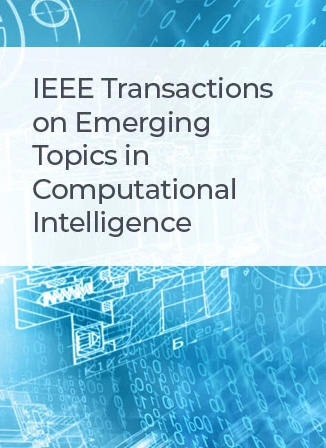Re-Stabilizing Large-Scale Network Systems Using High-Dimension Low-Sample-Size Data Analysis
IF 5.3
3区 计算机科学
Q1 COMPUTER SCIENCE, ARTIFICIAL INTELLIGENCE
IEEE Transactions on Emerging Topics in Computational Intelligence
Pub Date : 2024-08-20
DOI:10.1109/TETCI.2024.3442824
引用次数: 0
Abstract
Dynamical Network Marker (DNM) theory offers an efficient approach to identify warning signals at an early stage for impending critical transitions leading to system deterioration in extensive network systems, utilizing High-Dimension Low-Sample-Size (HDLSS) data. It is crucial to explore strategies for enhancing system stability and preventing critical transitions, a process known as re-stabilization. This paper aims to provide a theoretical basis for re-stabilization using HDLSS data by proposing a computational method to approximate pole placement for re-stabilizing large-scale networks. The proposed method analyzes HDLSS data to extract pertinent information about the network system, which is then used to design feedback gain and input placement for approximate pole placement. The novelty of this method lies in adjusting only the diagonal elements of the system matrix, thus simplifying the re-stabilization process and enhancing its practicality. The method is applicable to systems experiencing either saddle-node bifurcation or Hopf bifurcation. A theoretical analysis was performed to examine the perturbation of the maximum eigenvalues of the system matrix using the proposed approximate pole placement method. We validated the proposed method via simulations based on the Holme-Kim model.利用高维低样本数据分析的再稳定大型网络系统
动态网络标记(DNM)理论提供了一种有效的方法,利用高维低样本大小(HDLSS)数据,在广泛的网络系统中,在即将发生的关键转变导致系统恶化的早期阶段识别警告信号。探索增强系统稳定性和防止关键过渡的策略是至关重要的,这一过程被称为再稳定。本文旨在通过提出一种近似极点放置的计算方法,为利用HDLSS数据进行再稳定提供理论基础。该方法对HDLSS数据进行分析,提取网络系统的相关信息,然后利用这些信息设计反馈增益和输入位置,实现近似极点配置。该方法的新颖之处在于只调整系统矩阵的对角元素,从而简化了再稳定过程,提高了其实用性。该方法适用于存在鞍节点分岔和Hopf分岔的系统。利用所提出的近似极点放置方法对系统矩阵的最大特征值的摄动进行了理论分析。我们通过基于Holme-Kim模型的仿真验证了所提出的方法。
本文章由计算机程序翻译,如有差异,请以英文原文为准。
求助全文
约1分钟内获得全文
求助全文
来源期刊

IEEE Transactions on Emerging Topics in Computational Intelligence
Mathematics-Control and Optimization
CiteScore
10.30
自引率
7.50%
发文量
147
期刊介绍:
The IEEE Transactions on Emerging Topics in Computational Intelligence (TETCI) publishes original articles on emerging aspects of computational intelligence, including theory, applications, and surveys.
TETCI is an electronics only publication. TETCI publishes six issues per year.
Authors are encouraged to submit manuscripts in any emerging topic in computational intelligence, especially nature-inspired computing topics not covered by other IEEE Computational Intelligence Society journals. A few such illustrative examples are glial cell networks, computational neuroscience, Brain Computer Interface, ambient intelligence, non-fuzzy computing with words, artificial life, cultural learning, artificial endocrine networks, social reasoning, artificial hormone networks, computational intelligence for the IoT and Smart-X technologies.
 求助内容:
求助内容: 应助结果提醒方式:
应助结果提醒方式:


